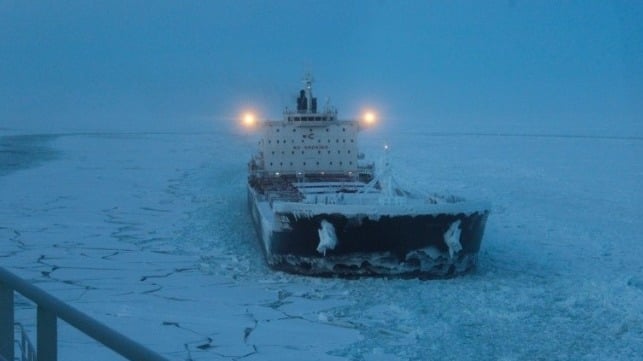NGOs Call for IMO Action on an Arctic HFO Ban

As shipping activity heats up in the Arctic, environmental advocates are encouraging the IMO to take action on the continued use of HFO and emissions of black carbon above the 66th parallel. Black carbon - soot from the exhaust stack - settles back out of the atmosphere, and when it lands on ice, its heat-absorbent properties accelerate melting. This contributes to ice loss, enhancing ease of navigation but also causing environmental harm.
Arctic traffic has doubled in the last 10 years, and is on track to keep growing. According to advocacy group Pacific Environment and the Clean Arctic Alliance, the fix is as simple as mandatory fuel switching to a "polar" distillate, much like an ECA zone in European waters. This would close what the NGOs describe as a loophole in current rules: the IMO Polar Code banned HFO in parts of the Arctic in 2024, but the treaty's provisions allow many vessels to continue using heavy fuel oil until 2029, and certain areas in the North Atlantic and the Barents Sea are exempt.
"Despite technical assessments and calls for voluntary measures at the IMO, black carbon emissions from Arctic shipping continue to grow unchecked. Without mandatory requirements, markets lack the certainty needed to shift fleet operations toward lower black carbon options," said Kay Brown, Arctic policy director at Pacific Environment.
Progress at IMO has been slow, Pacific Environment said, in part because of lower awareness of the impacts of black carbon and in part because of political differences among member states. A ban on the use of HFO in the Arctic would raise fuel costs for a number of regional shipping interests: fishing and cruise tourism in northern Norway, Greenland and Svalbard; small local ports in northern Alaska and Canada; and the Russian-controlled Northern Sea Route, which Moscow is attempting to grow into an international thoroughfare.
"Because marine distillates are generally more expensive than the heavier HFO, VLSFO and ULSFO residual fuels, requiring the use of marine distillates could increase operational costs for shipping companies operating in the Arctic. Increased costs may lead to higher freight rates, which could affect the pricing of goods transported to and from Arctic regions," the NGOs acknowledged.
The NSR might be the highest-volume route affected by a potential fuel mandate. Voyages on the eastern half of the route are largely restricted to the warmer months because of heavy winter ice, but with investments in icebreaker tonnage and shrinking ice cover, Russia's government believes that it will soon be able to maintain year-round navigation - a long-sought goal.
